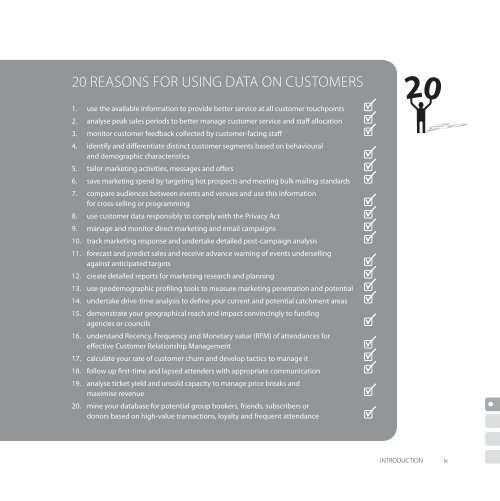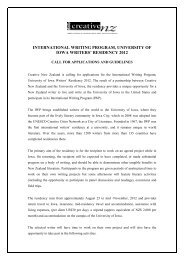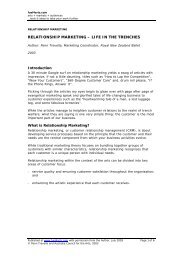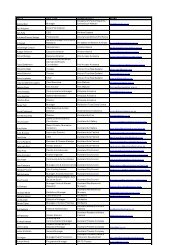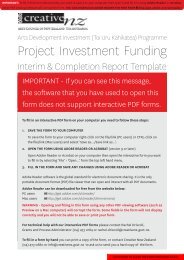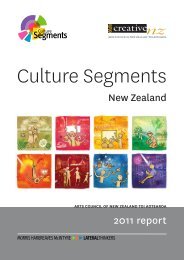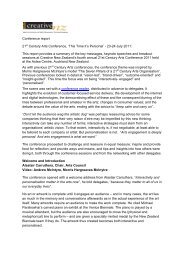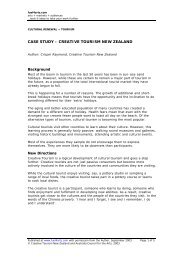FULL HOUSE Turning Data into Audiences - Creative New Zealand
FULL HOUSE Turning Data into Audiences - Creative New Zealand
FULL HOUSE Turning Data into Audiences - Creative New Zealand
You also want an ePaper? Increase the reach of your titles
YUMPU automatically turns print PDFs into web optimized ePapers that Google loves.
20 REASONS FOR USING DATA ON CUSTOMERS<br />
.<br />
2.<br />
3.<br />
4.<br />
5.<br />
6.<br />
7.<br />
8.<br />
9.<br />
0.<br />
.<br />
2.<br />
3.<br />
4.<br />
5.<br />
6.<br />
7.<br />
8.<br />
9.<br />
20.<br />
use the available information to provide better service at all customer touchpoints<br />
analyse peak sales periods to better manage customer service and staff allocation<br />
monitor customer feedback collected by customer-facing staff<br />
identify and differentiate distinct customer segments based on behavioural<br />
and demographic characteristics<br />
tailor marketing activities, messages and offers<br />
save marketing spend by targeting hot prospects and meeting bulk mailing standards<br />
compare audiences between events and venues and use this information<br />
for cross-selling or programming<br />
use customer data responsibly to comply with the Privacy Act<br />
manage and monitor direct marketing and email campaigns<br />
track marketing response and undertake detailed post-campaign analysis<br />
forecast and predict sales and receive advance warning of events underselling<br />
against anticipated targets<br />
create detailed reports for marketing research and planning<br />
use geodemographic profiling tools to measure marketing penetration and potential<br />
undertake drive-time analysis to define your current and potential catchment areas<br />
demonstrate your geographical reach and impact convincingly to funding<br />
agencies or councils<br />
understand Recency, Frequency and Monetary value (RFM) of attendances for<br />
effective Customer Relationship Management<br />
calculate your rate of customer churn and develop tactics to manage it<br />
follow up first-time and lapsed attenders with appropriate communication<br />
analyse ticket yield and unsold capacity to manage price breaks and<br />
maximise revenue<br />
mine your database for potential group bookers, friends, subscribers or<br />
donors based on high-value transactions, loyalty and frequent attendance<br />
20<br />
INTRODUCTION<br />
ix


